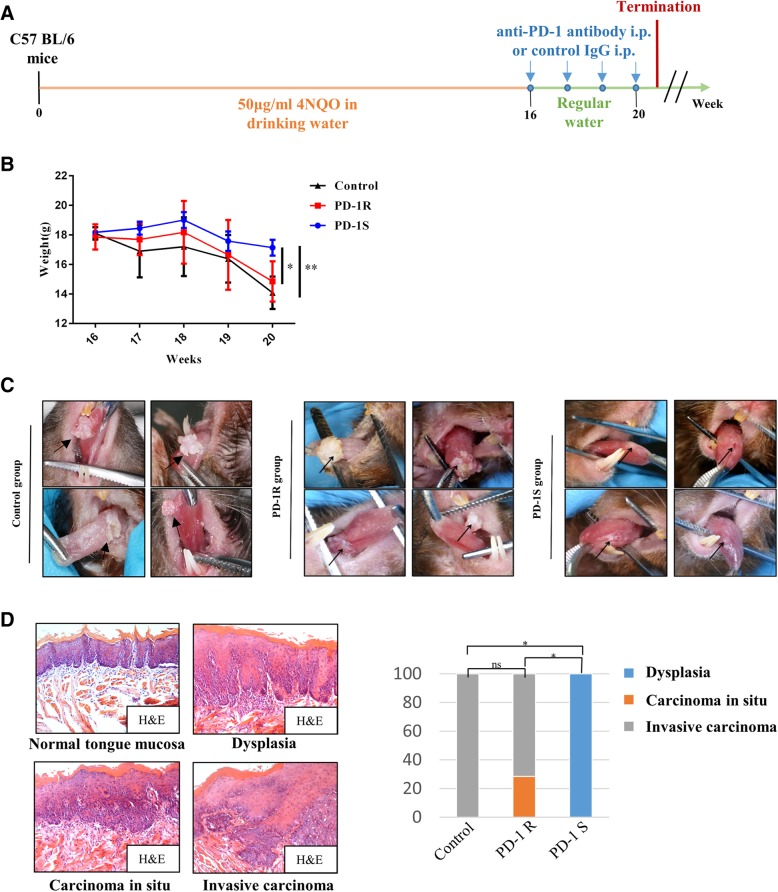Fig. 1.
PD-1 blockade resistance occurred in the oral malignant transformation mouse model. a The schematic picture shows the 4NQO treatment and anti-PD-1 antibody(n = 23) and control IgG (vehicle control, n = 5) drug delivery strategies in C57BL/6 mice. b Body weight (g) was measured and documented for the control group and anti-PD-1 group (the PD-1R and PD-1S groups) once a week. Significant weight loss was observed in the PD-1R group at week 20. The data are presented as the mean ± SEM (one-way repeated-measures ANOVA, *P < 0.05, **P < 0.01). c Representative macroscopic observation of the lingual mucosal lesions after treatment with control IgG(left panel) or anti-PD-1 antibody in the PD-1R group (middle panel) and PD-1S group (right panel). For PD-1R group, similarly with control group, leukoplakia-like lesions with smooth surfaces progressed into white masses with cauliflower-like (upper left), rough and granular (upper right) or exogenous verrucous surfaces (lower right and left). The lingual mucosal lesions treated with anti-PD-1 antibodies maintained a wrinkled paper-like appearance macroscopically in PD-1S group. d Representative hematoxylin and eosin (H&E) staining of dysplasia, carcinoma in situ (pre-invasive carcinoma) and invasive carcinoma. Statistical significance was determined by the Kruskal-Wallis test, *P < 0.05

